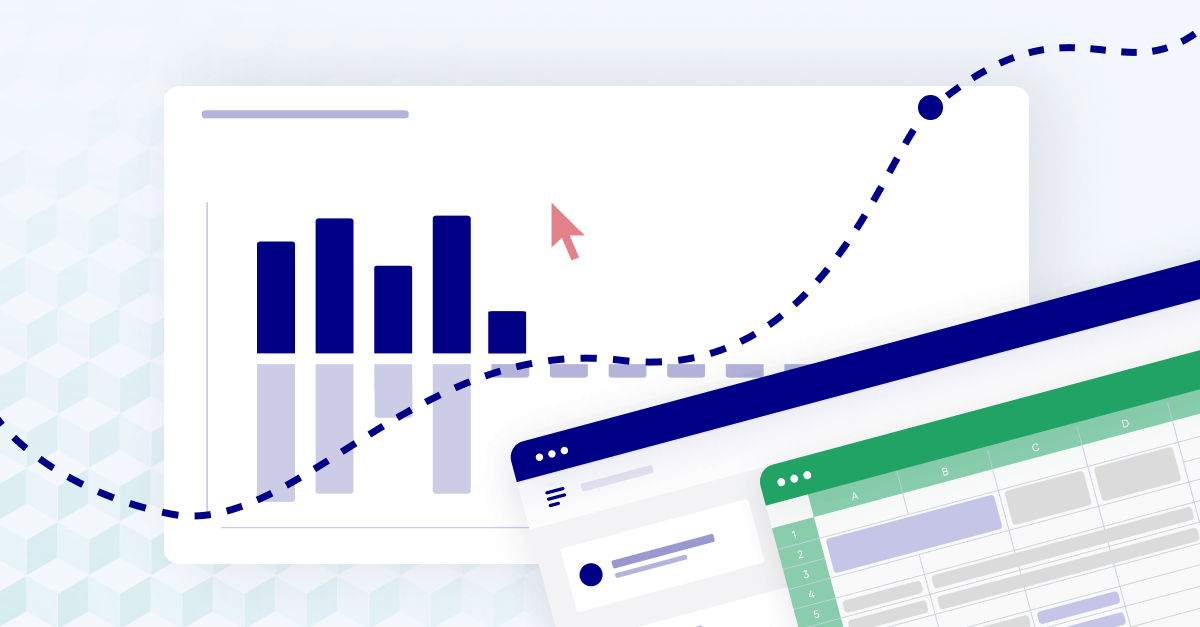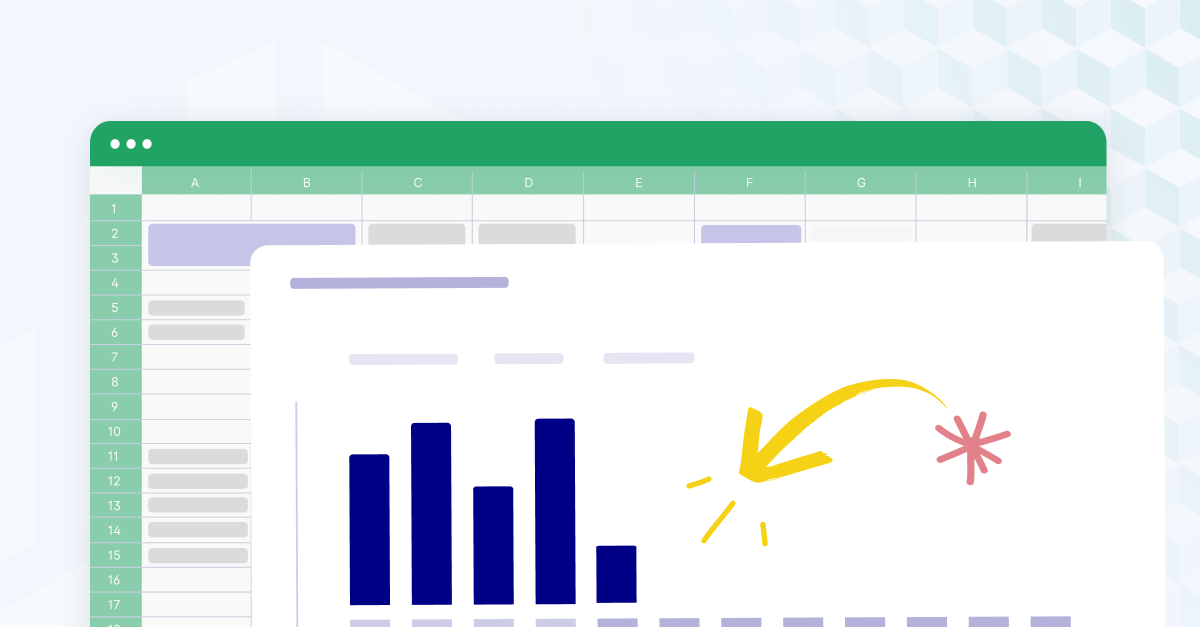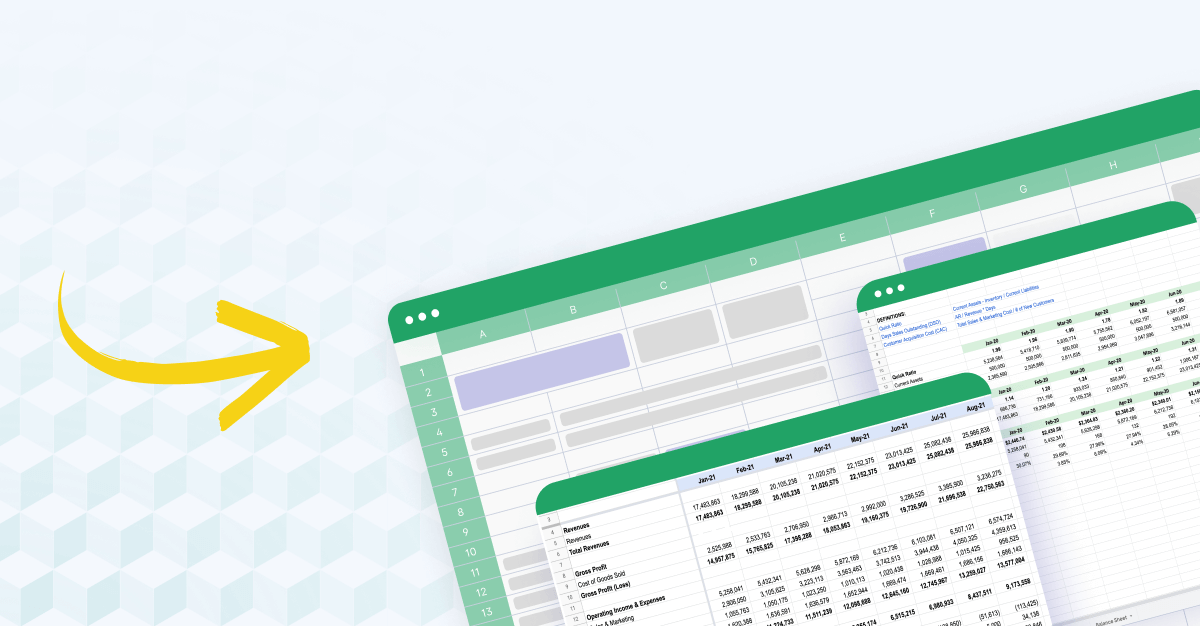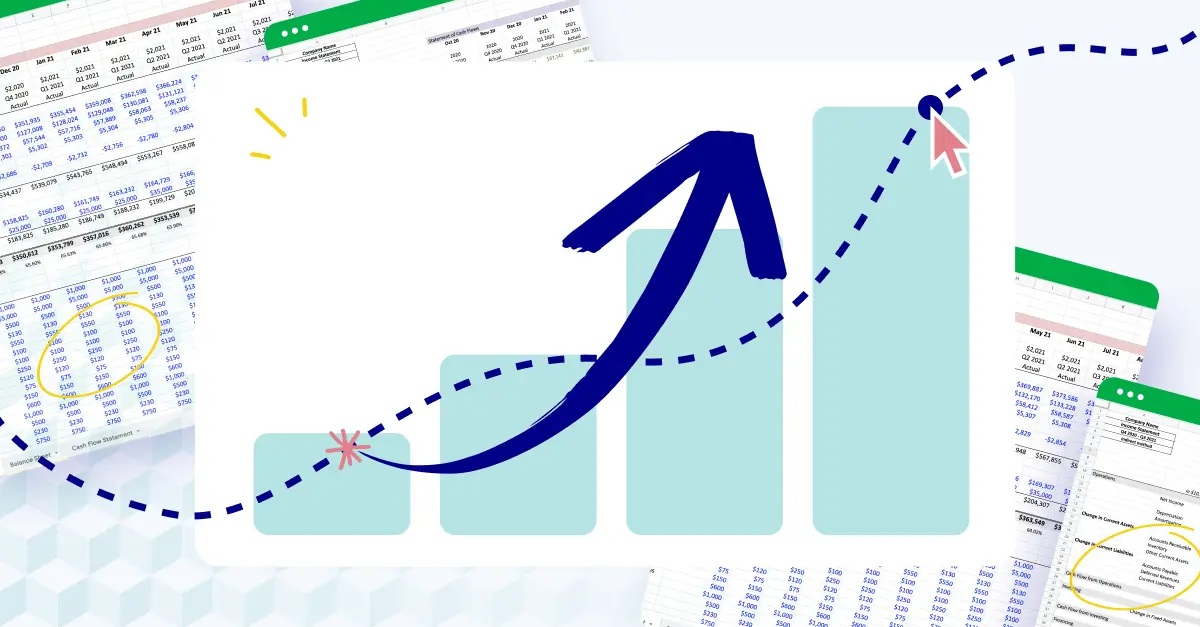Benefits of early budget preparation
Early budget preparation plays a big role in your level of success (and sanity) during budget season. Getting a jump on preparation creates time to cleanse and verify data, identify cost savings, conduct scenario planning, build consensus among your stakeholders, and build a project management calendar that makes sense for your team and the workload.
With early budget preparation, your team can improve three key areas of the budget process:
Project management
Budget season often puts finance folks on edge, invoking the end-of-year expectation of stress and long hours. This relationship with planning is responsible for worker burnout and attrition, as stress leads many finance professionals to move on to other roles.
Early budget preparation prevents a budget crunch. It allows leaders to take a project management approach, assign stakeholder roles, set project milestones, identify priorities, and avoid the last-minute rush to finish.
Accuracy
Accurate data is the foundation on which all budgets and forecasts are built. Unfortunately, when left to the last minute, data validation often slips through the cracks.
When these errors aren't caught early, they can pile up over time, leading to bigger issues down the road. Often, these mistakes only come to light during audits or third-party evaluations, which can lead to problems like financial penalties, damaged reputation, mistrust from stakeholders, and potential legal consequences.
Early budget preparation allows the team to collect data, conduct litmus tests, check historical reporting for issues, and identify inadvertent or intentional errors or activities. All of this can prevent the company from encountering disastrous issues later down the line.
Strategy
Early budget preparation allows the financial team to compare different financial strategies or options before committing spend. It’s important to consider both practical and theoretical approaches when deciding on a budgeting process, as this helps to ensure all options align with company goals.
Having multiple scenarios can be especially useful when preparing for unexpected events or fluctuations in income or expenses. During turbulent market conditions, having a backup plan becomes a competitive advantage, allowing well-prepared companies to pivot more readily.

Factors influencing the budget preparation process
Every budget process looks different, especially when comparing SMBs to larger enterprises. Numerous factors influence the timeline and complexity of the exercise.
For some teams in larger corporations, budget planning is a year-round endeavor. They often opt for a dynamic or rolling budget approach, which allows for continuous adjustments based on current financial data and market conditions. This method spreads the effort throughout the year, ensuring that the budget stays relevant with the organization's evolving objectives.
To make the budget process a more consistent and manageable task, some SMBs may also opt for a rolling budget approach. However, given their leaner resources and structure, some may prefer the traditional static budgeting model. They'd allocate a specific period, from a few weeks to a couple of months, to draft their financial plan for the upcoming fiscal year.
Research from APQC revealed in its Open Standards Benchmarking survey of 3,900 organizations that top performers complete an annual budget in 25 days. The 75th percentile of respondents may take double this amount.
Regardless of the business size or approach, it's essential to recognize the unique needs and challenges each organization faces and choose a budgeting strategy that best aligns with its goals and operational dynamics.
In general, some key factors that drive your budget preparation may include:
- Company size
- Budget complexity
- Finance team size
- Technical maturity
- Industry
- Data availability
Company size isn’t a direct correlation on its own. Factors like data visibility, systems integration, and automation all play a big part in organizing, compiling, and finalizing the budget.
Steps to prepare for budget planning
Preparing for budget season should include forethought, curiosity, and collaboration to ensure your budget drives the company in the right direction.
Follow these steps to prepare for a productive budget season:
1. Identify organizational goals
It's important to identify organizational goals at the beginning of the budgeting exercise, as this will help guide spending. Start by asking questions such as:
- What goals do we want to achieve this year?
- Where do we want to invest our resources?
- How will our investments help us realize our objectives?
This can help you build a framework for setting a budget that aligns with the company's desired outcomes.
Additionally, make sure everyone involved in the budgeting process agrees on what success looks like and how it will be measured. This will ensure everyone is on the same page and working towards a common goal when it comes time to draw up the budget.
2. Gather historical data
Historical data is often the best indication of your past efforts and safe future assumptions. Collect financial statements, previous budget data, variance reporting, benchmarking studies, and other key information to inform the budget exercise.
This data provides a clearer picture of the financial health of the organization and how resources have been allocated in the past. It enables better forecasting when setting expectations for future performance. Understanding past trends helps you estimate needed funds for organizational goals with greater accuracy.
3. Estimate income and expense expectations
Project forecasted revenues from different sources within the organization, such as:
- Sales and grants
- Operating costs, staff salaries, and overhead
- Potential risks that could affect the organization's finances
Review any cash flow sources to be considered in the coming year, including new streams of revenue, grants, outside funding, or potential sales of assets or securities.
You should consider both short-term and long-term company goals during this exercise and consider external economic factors and industry trends. Including these factors in your estimates draws an accurate picture of necessary budget resources.
4. Consider hiring and expansion costs
Wages and fixed expenses play a significant role in the overall cost of operations. When preparing for a budget exercise, get a sense of the coming year in terms of growth and expansion. Look specifically for changes in employment-related costs and wages, such as:
- Office or remote costs
- Salary and compensation
- Bonuses
- Training and development
As with the rest of the budget, planned increases in headcount should align with the short- and long-term goals the company will pursue during the budget period.
5. Review performance metrics
Before diving into the budget planning process, it's crucial to take a step back and analyze your company's performance metrics. This entails reviewing the company’s recent financial and operational activities, like revenue streams, operational costs, and profit margins. For example, metrics such as the current ratio, gross profit margin, and customer acquisition cost can provide invaluable insights into your financial health.
It's beneficial to regularly compare these figures, either monthly or quarterly, against your set budgets and key performance indicators (KPIs). Say the sales conversion rate dips below expectations; this could be an early signal to reevaluate marketing spend or reallocate funds for sales training in the upcoming budget. A low inventory turnover, in comparison to industry benchmarks, might hint at the need to revisit inventory management and procurement strategies in the budget.
Incorporating an analysis of these performance metrics as an initial step in budget preparation ensures you're building your financial plans on a foundation of real-world data and performance. This proactive approach helps in creating a more accurate, responsive, and strategic budget for the coming period.
6. Talk to department stakeholders
When preparing for budget planning, direct conversations with department heads and team leaders are invaluable. For instance, the marketing department might be planning a big campaign for the next quarter that requires a higher budget allocation. Simultaneously, the IT department could be looking at significant software upgrades that are essential for improved productivity.
Engaging in collaborative budgeting provides an opportunity for each department to communicate their specific needs. It ensures that the budget reflects real-world requirements and that resources are appropriately allocated. For example, HR might voice a need for recruitment drives to support expanding projects, while operations could highlight the necessity for equipment maintenance or replacements.
Moreover, these dialogues with department leaders can uncover potential challenges or opportunities that may not be evident at a higher level. Perhaps the sales team has identified a new market segment that promises significant growth, but tapping into it requires initial investment. Or, the manufacturing department might warn of upcoming supply chain issues that necessitate financial contingencies.
By involving key departmental stakeholders in the early stages of budget planning, it fosters transparency, collaboration, and ensures that the final budget is both comprehensive and well-aligned with the organization’s evolving needs.
7. Designate your budgeting team and assign specific tasks
A collaborative effort is best achieved when everyone knows how and when they will contribute. Clear delegation of responsibilities is essential to prevent oversights and ensure a smooth workflow.
For example, while the finance department's head might oversee the entire budgeting process, a financial analyst could be tasked with collecting and analyzing data from various departments.
After pinpointing key stakeholders, it's crucial to enumerate all contributors involved in the budget-making process. For instance, while Sarah from the marketing department might be responsible for submitting the advertising budget, Raj from IT would provide estimates on system upgrades.
For each member of your budgeting team, clearly specify their individual responsibilities. For example, John from sales might be tasked with providing sales projections by the 10th of the month, while Lisa from HR might have until the 15th to submit anticipated hiring costs.
Laying out a detailed roadmap with deadlines not only keeps everyone on track but also enables them to balance budgeting tasks with their daily responsibilities. This level of clarity and organization ensures everyone is aligned and contributes effectively to the budgeting process.
Early budget process planning challenges
To avoid the most common budget season pitfalls, you need to anticipate them.
Often, the main issue is a lack of integration between different departments and systems. Without sufficient visibility, it can be difficult to get meaningful insights into the budget.
Additionally, changing market conditions introduce uncertainty into modeling. Not to mention overburdening both stakeholders and finance teams can result in fatigue and mistakes, complicating the process further.
To tackle these challenges, consider following these best practices:
1. Know your goals first
A clear understanding of the organization's goals and objectives is the best tool to ensure your budget achieves its aim. Without alignment between an organization's budget and its goals, it becomes difficult to make necessary trade-offs and prioritize resources. Consider both the short and long-term goals your organization has on the horizon. Short-term goals should serve the ultimate long-term objectives, and the budget should support both.
2. Build transparency into the process
Budget alignment requires transparency and communication throughout the process. It helps FP&A teams, stakeholders, and executive decision-makers understand the impact of decisions and priorities. Transparency also breeds accountability in budget management, ensuring that all stakeholders remain invested in the outcome.
To build transparency, document and refine the budget process. Make sure all relevant information is available to team members, and that objectives and processes are clearly defined. Be sure to solicit feedback early and often, and create a framework for accepting and assimilating these suggestions into future budget exercises.
3. Set a reasonable pace
The budgeting process can be complex and time-consuming, even for seasoned finance teams. Departments might find themselves stretched thin in terms of experience, resources, and time. Trying to push a process too fast may backfire if finance lacks the necessary resources to prepare and test a budget within an aggressive timeline.
When allocating resources for budgeting, teams should prioritize an achievable timeline and a realistic plan. Define a timeline that is realistic and achievable given department resources, and leave plenty of time to research issues and test results. Setting firm project milestones helps the team track progress and meet deadlines.
4. Acquire the right tools
Strong budgeting requires deep analytics. As a company grows in revenue and complexity, software makes the budget process faster and more manageable.
FP&A software streamlines data discovery, verification, and calculations. These programs also allow users to quickly generate reports, keep track of expenses, compare historical budgets, and identify discrepancies. It also gives teams the ability to centralize the budget process and access data from anywhere.
5. Budget for flexibility and adaptability
Even within a static budget, flexibility is central to success. Too much rigidity in the numbers or the budget rationale leads to variances and, ultimately, more work down the road. Successful budgets consider potential changes on the horizon and make allowances for changes in market assumptions and conditions.
Set aside a contingency fund within the budget to account for variable expenses like inflation, exchange rate fluctuations, geopolitical risks, and other factors that could increase costs or reduce revenue. By taking these potential changes into account during budget preparation, organizations can better prepare themselves and remain agile and responsive to changing conditions.
Incorporate what-if analysis into budget prep to gain a clearer picture of potential strategies and scenarios. This will help identify areas of risk and opportunity, allowing firms to be proactive and react to change should the landscape change during the fiscal year.
Consider a third-party audit or review to ensure that all assumptions are reasonable. This extra step can avoid costly issues and improve overall budget accuracy and confidence with the help of a neutral third party.
The sweet spot: Finding the right time for budget planning
Timing is a key component of your budget. Starting early can save your team hours or days of frustration and reconsideration.
However, if you start too early (before information is fully available), you’ll end up investing time in changed assumptions, re-running scenarios based on new data, or gambling on market conditions to remain stable.
On the flip side, starting too late presents its own challenges. While it’s tempting to wait until you have the freshest possible data, crunch time reduces accuracy and introduces errors. Budget timelines should provide ample time for data validation, investigation into issues, communication with departments, and discussion time for the executive team—all of which is sacrificed if you wait until the last minute.
To establish a feasible timeline, consider these factors:
-
The budgeting approach: Different budgeting methodologies demand distinct levels of data collection, analysis, and validation. For example, a company opting for zero-based budgeting will need more time as each expense is re-evaluated from scratch, compared to a company using incremental budgeting that adjusts based on the previous year.
Review your chosen budgeting approach early on and allocate time accordingly. If adopting a new approach, consider running a mini-trial or simulation to gauge the time and resources required.
-
Previous year planning: How long have previous budgeting exercises taken? Past timelines offer valuable benchmarks, guiding expectations for the current cycle. For instance, if unexpected challenges extended last year's process to four months, it's smart to anticipate a similar duration this year.
Revisit the previous year’s budgeting timeline, noting areas that consumed more time than expected, and plan proactive strategies to streamline those stages.
-
Previous budgeting outcomes: How successful and accurate have previous budget planning efforts been? Gauging the success and challenges of past budgets can spotlight areas needing additional attention. For example, a shortfall in last year’s sales projections might hint at the need for more in-depth market analysis this time around.
Analyze discrepancies in past budgets, zero in on recurrent problem areas, and assign dedicated teams or employ specialized tools to address those concerns.
-
Complexity of the budget: Company size and scale will naturally dictate the complexity of your budget process. For example, a singular product line at a startup simplifies budgeting in contrast to a multinational conglomerate juggling diverse variables.
Conduct an early complexity assessment of your business's operations. For multifaceted enterprises, consider segmenting the budgeting process by departments or regions, allowing for focused and manageable sub-processes.
Taking a continuous improvement approach to the budget process will help the team refine its practice, integrate new techniques, and ensure confidence in the finished product.
Conclusion: timing is everything
Striking the right balance in budget preparation timing is essential. By considering the factors outlined in this blog and adapting them to your unique situation, you're well on your way to fostering a budgeting process that's both efficient and effective. Remember, it's not just about when you start, but how you navigate the journey that determines your success.
Want to learn how Cube can help you sail smoothly through the budget preparation process? Request a free demo today.



.png)









